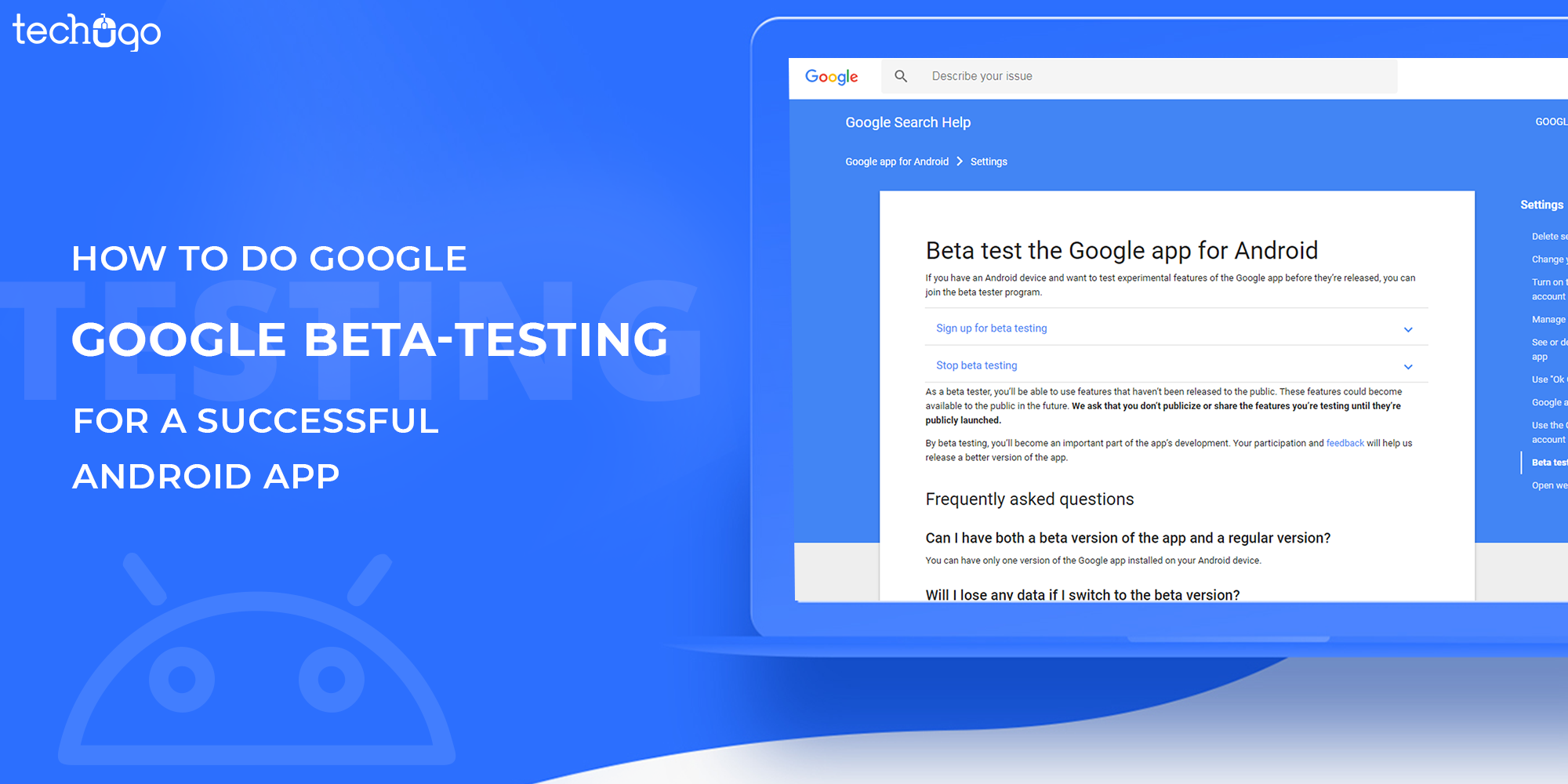Write Us
We are just a call away
[ LET’S TALK AI ]
X
Discover AI-
Powered Solutions
Get ready to explore cutting-edge AI technologies that can transform your workflow!


Android App Beta-Testing is not the first-ever heard term, by any of us…but it is certainly a much-avoided aspect by most of us…L
How sad it is…But a fact as well…L
Unfortunately, this very fact engages well with the app rejection formula and brings out the ways to make your app get refused from the targeted audience.
Google is a leading Tech-giant, which has introduced the Android platform as a blessing for the users, and to make the android app development process a remarkable journey, but this all could be possible further with the integration of Google Play beta testing.
Don’t take me wrong but the worth of Google Play beta testing is something which cannot be explained in words.
Thus to explain every bit of Google Beta-Testing to you, I am here today and I would certainly explain the Beta-testing to you, so it can help you pick up the benefits out of it….please read ahead…
Before initiating the journey of Google play beta testing saga, I would like to draw your attention towards the number of benefits it holds…
Now when you are well-versed with the benefits Google Beta Testing has to offer, the next big thing you need to be aware of is that…how does it work???
Let’s find out together… J
Just like the flexibility offered in the Android system, Google offers the ample amount of flexibility in the beta testing process as well and for a surprise, there are three different ways to make this process happen…
Before initiating the testing process, you require…
Don’t forget, Testers can’t submit public reviews. Also if a Paid App is tested, on any testing mode then even Testers are required to purchase it. But a Paid App tested through the internal test would not require any sort of payment.
First and the foremost pick the Testing method:
Within this, an open release is used to run a test with a large group, which surfaces the app’s test version on Google Play. The biggest advantage of open beta testing is that you can create a large community of testers.
But it has a limitation of submitting the private feedback to you.
On the App releases page, an Alpha track remains available as the initial closed test, wherein an additional closed tracks name can be created.
Within this process, while testing an existing app published before, only the users in the test group would receive an update for the closed version.
After publishing an open, closed, or internal test for the first time on the app, it may take a few hours for the test link to be available to testers. If certain additional changes are published, then it may consume several hours to be available for testers.
Create A Release
Share The Opt-In URL With Users
Receive Feedback
Finish The Test
Testing the Android app is simple, and must be uploaded the beta APK to the Developer Console.
Then notify the beta testers to give it a try. If it passes the testing phase, click on the Promote to Prod button and that version would be rolled out to all live users in a few hours.
I truly feel that with this blog, you can easily understand that why the Beta testing for your Android app is MUST and cannot be skipped at any given time. Although the association of the right Android app development team from a leading app development company in Canada is must since this team would have the required experience and the exposure to handling your App Testing on Beta hassle free.
Write Us
sales@techugo.comOr fill this form